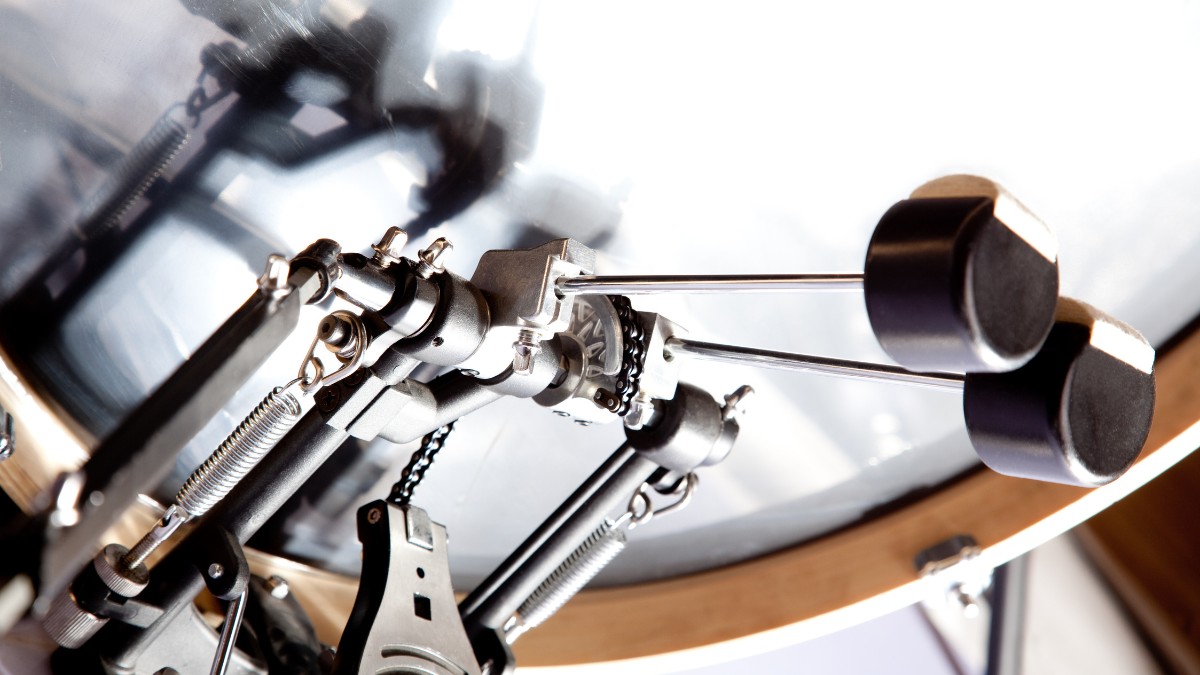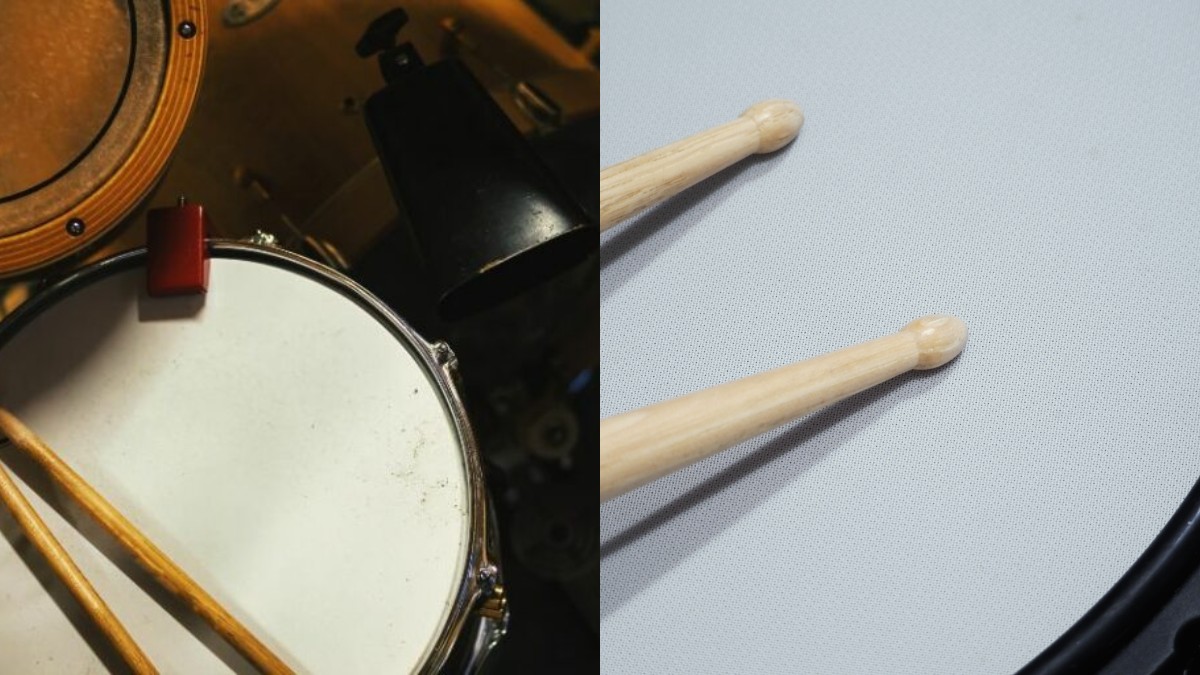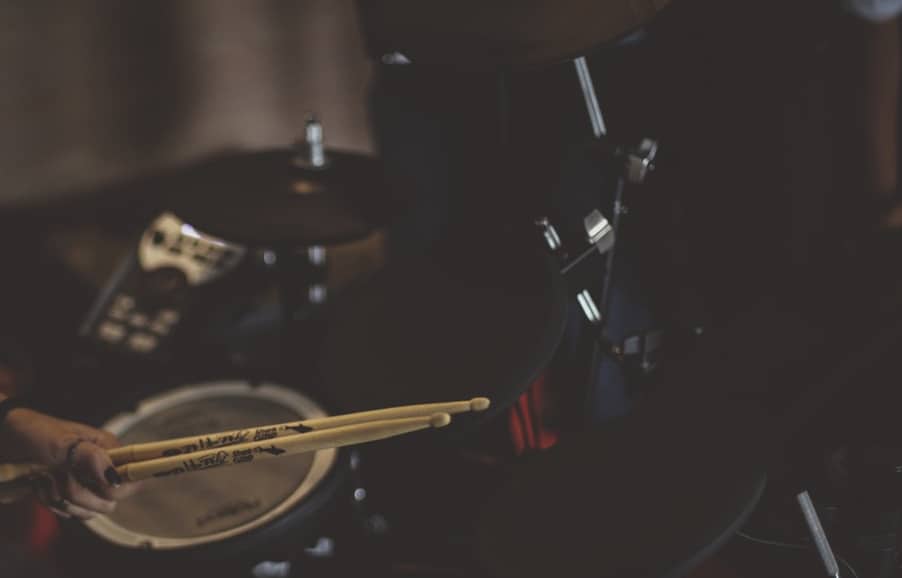Drum Tuning 101: How to Tune Your Drum Set

The drum set can be tuned by ear or using a drum tuner. In order to tune your drum set, you will need the following: A drum key, a drumstick, a drum tuner (though this is optional), and most of all – patience.
Drum tuning has a large impact on the overall sound of your kit. Good tuning can make a cheap drum set sound great and poor tuning can make even the most expensive kit sound bad!
Simply following a few tips can make all the difference. Drum tuning shall no longer be an intimidating task!
You should get into the habit of tuning drums regularly, not just when you buy a new set of drum heads! If you practice regularly then tune them every week or two.
If you are a professional drummer then you should tune your drums multiple times per week.
Contents
What you will need
- A drum key
- A drumstick
- A drum tuner (Optional)
- Patience
How to Tune a Drum Kit
- Take off all the drum heads from the entire set and clean the kit with a cotton cloth. Make sure you get every nook and corner, especially the rims and bearing edges.
- Pick any part of the kit to start with, the snare for example. Place the batter (top drum head) and center it.
- Place the drum hoop on top of the head to secure it and screw in all the tension rods using your drum key till they are fairly tight.
- Now pick one tension rod and tighten by a full (or half) turn of the drum key and then tighten the tension rod diagonal to it by a full (or half) turn. This means if your first rod was a 3 o’clock, then you will tighten the 9 o’clock tension rod next. Work your way around all the tension rods using this diagonal tuning method (either clockwise or anti-clockwise). The reason drummers do this is to maintain even tension on the drum head as they tune.
- After each round, tap the drum head with your stick to check what it sounds like. Keep tightening the rods (gradually reduce the amount you turn) until you feel you are close to the appropriate pitch.
- Once you close in on the target pitch, it is time to fine-tune. Just tap the stick an inch from the outer edge of the head (close to the tension rods) and check which spots sound dissonant. If any particular spot sounds ‘off’, you need to either tighten or loosen the tension rod. If the pitch is sharp, you need to loosen it. If the pitch is flat, you need to tighten in.
- Continue to tap, listen, and tighten/loosen until you are pleased with what you hear. The goal is to ensure that the sound is even across the head.
- Now repeat this for all the other drum heads and viola!
Tuning Tips (Batter vs Resonant Heads)
- The top drum head is called the batter head and it reverberates when it is struck by the drum stick. The bottom drum head is called the resonant head and it reverberates because the air between the two heads compresses and expands. The fastest way to get better at tuning is to internalize the sonic relationship between the resonant and the batter. This remains constant across the kit regardless of which part you are tuning.
- Batter (top) and resonant (bottom) tuned to the same pitch yield the best sustain and reverberation.
- Batter tuned lower than resonant will have lower sustain with a neutral sound.
- Batter tuned higher than resonant will lead to less sustain with a more thuddy sound.
Pro-Tip: Since you strike the batter heads, they wear out faster. You can change the resonant every other time you replace the batter.
Using a Better Type of Drum Key
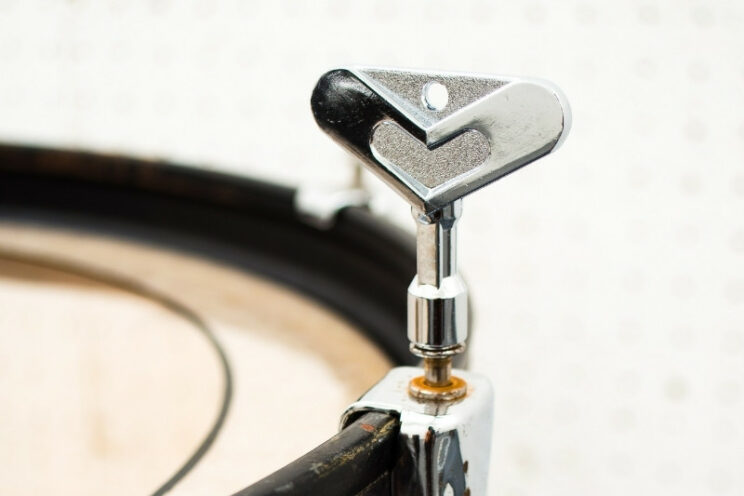
Most drummers just carry a universal standard drum key and use that for tuning.
However, more specialized types of drum keys can be bought for a relatively inexpensive price. These can make drum tuning faster and easier.
Speed keys are particularly useful for quickly turning the lugs when replacing heads.
Check out our article on the different types of drum keys for more information.
Using a Drum Tuner
Tuning drums can be a bit intimidating for beginners. It only gets worse if your ears aren’t trained to recognize subtle differences in sound.
It would be ideal to have a relative pitch and pull off a drum tune in a matter of minutes. The truth is that even professional drummers can struggle a little to get all the pitches right.
I believe a drum tuner is an indispensable piece of equipment, at least in the initial stages of your drumming career.
It speeds up the process and gives you more time to practice your rudiments. We did a whole article on drum tuning and also reviewed five of the best drum tuners on the market that you can check out.
Dampening the Heads
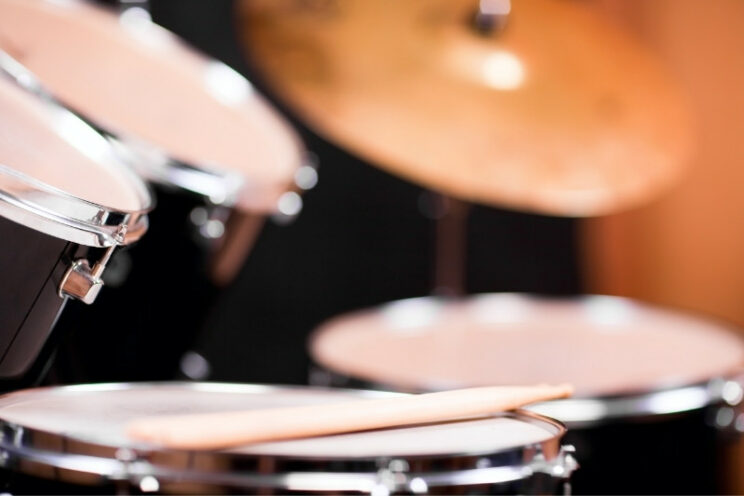
Many drummers put pillows or the soft case of the kick drum in the cavity of the kick to dampen it. Some people use the ol’ gaffer tape to plaster some foam or cymbal felt to the tom drum head.
Other drummers use the more ‘pro’ and specially designed Moongel available at stores on the snare. The true old skool legends tape their wallets to floor toms to extract all kinds of oomph.
Either way, the goal of dampening is to reduce or eliminate unwarranted overtones. Just make sure you don’t do anything drastic that ends up ripping the skin.
Conclusion
Drum sets can be tuned in a matter of minutes and even amateurs can get great results. The more you play, the faster you get at tuning drums. Always remember to match the resonant with the batter and keep an equal tension across all heads. If something sounds off when tapping, simply tighten or loosen the corresponding tension rod appropriately.
Using a drum tuner is a great way to speed up the tuning process. It is also the only foolproof guarantee that you are tuning in unison across all drums.
Once you get better, don’t be afraid to experiment with dampening by placing pillows or other materials in the kick drum. This may help reduce some of the overtones and yield a more balanced tone.
Remember, the old school legends used to tape their wallets or other objects to the drums that needed dampening if they didn’t have official drum muffling equipment!

